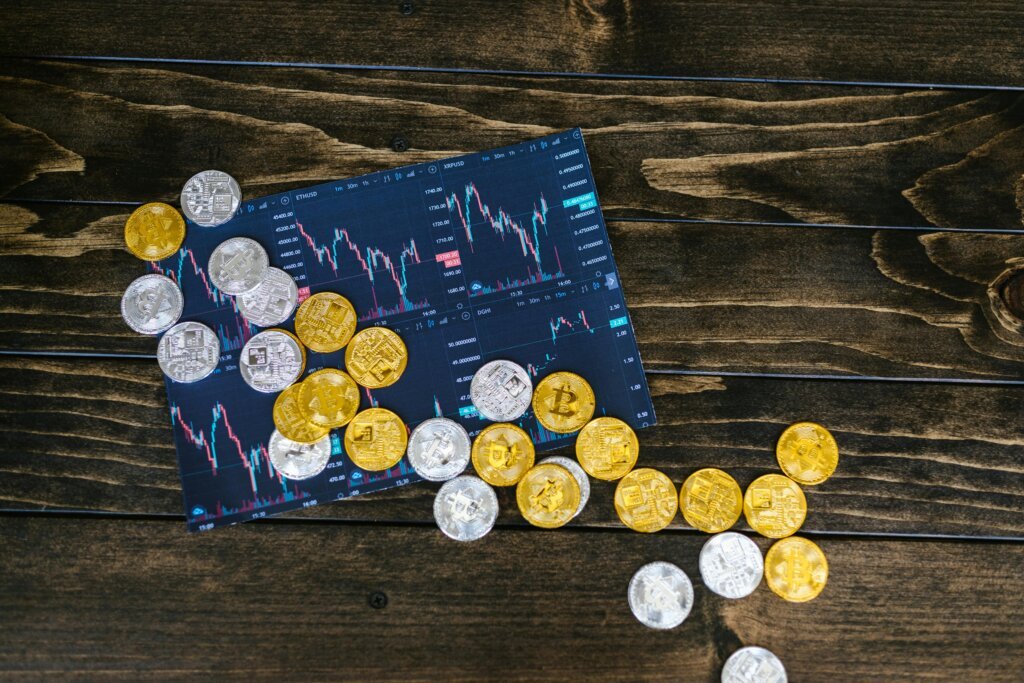How to Identify Market Trends: A Beginner’s Guide
Imagine being able to predict the next big thing before it goes mainstream—whether it’s the AI revolution, the plant-based food boom, or the remote work transformation. That’s the power of market trend analysis, and it’s not just for Wall Street experts.
From small business owners to individual investors, understanding market trends can mean the difference between riding a wave of opportunity and getting left behind. In this comprehensive guide, we’ll break down exactly how to identify trends early, using tools and strategies anyone can apply—no finance degree necessary.
What Are Market Trends? (And Why They Matter More Than Ever)
A market trend is simply the general direction in which an industry, asset class, or consumer behavior is moving over time. Imagine it like the current of a river—if you try to swim against it, you’ll struggle, but if you learn to ride the flow, you can reach your destination with much less effort.
Understanding the different types of market trends is the first step to catching those waves of opportunity. Let’s explore the main categories and how they shape the business landscape.
Types of Market Trends:
| Duration | Example | Why It Matters |
|---|---|---|
| Short-term (Days/Weeks) | Meme stock surges (GameStop) | Quick profit opportunities |
| Medium-term (Months/Years) | Remote work adoption | Business model shifts |
| Long-term (Decades) | Renewable energy transition | Career & investment choices |
Recognizing market trends isn’t just an academic exercise—it has real-world consequences that can make or break fortunes. When investors caught the electric vehicle (EV) wave early, backing companies like Tesla and BYD, they saw returns multiply tenfold or more. Meanwhile, businesses that ignored shifts like the rise of e-commerce, such as Blockbuster and Toys “R” Us, paid a heavy price—ultimately going bankrupt.
“The best way to predict the future is to spot it early.”
— management expert Peter Drucker
Understanding market trend can be the difference between leading the pack and falling behind.
5 Powerful Ways to Identify Trends (Before Everyone Else)
1. Follow the Money: Financial & Economic Signals
One of the clearest ways to identify emerging trends is by watching where investors and governments are putting their money. Stock markets, especially sector-focused ETFs, often reveal which industries are gaining momentum—if a sector ETF is consistently outperforming, that’s a strong hint something big is happening there. Venture capital funding is another goldmine; tracking what startups receive investments from top VCs can give early signals of the next hot industry.
Government policies also shape trends significantly. Subsidies for renewable energy or bans on fossil fuel vehicles, for example, can accelerate market shifts even before consumers fully catch on.
Tools to use:
✔ TradingView (to analyze sector performance charts)
✔ Crunchbase (to track startup funding trends)
✔ Central bank reports (to monitor interest rate changes and economic shifts)
Example: When ARK Invest poured capital into genomics ETFs in 2020, it marked the beginning of a major biotech boom that savvy investors capitalized on.
2. Google Trends & Search Data (What People Really Want)
Search behavior is a powerful window into consumer interest—often long before purchases reflect those interests in sales numbers. By comparing search terms like “solar panels” versus “oil stocks,” you can gauge shifting preferences. Looking at regional data highlights where trends are gaining traction fastest, while tracking seasonal spikes helps identify predictable market rhythms.
Pairing this with tools like Google Keyword Planner lets you estimate how many people are actively searching for specific products or services, refining your insight even further.
How to use it:
- Compare search terms (“solar panels” vs. “oil stocks”)
- Check regional interest (Where is AI growing fastest?)
- Track seasonality (“Christmas gifts” spikes every November)
Case Study: The term “NFT” saw a massive surge in January 2022, signaling the craze before the market subsequently cooled off. Those who monitored search trends closely were able to exit early and avoid losses.
Pro Tip: Use Google Keyword Planner alongside Google Trends for deeper volume insights.
3. Social & Cultural Shifts (The TikTok Effect)
Today, many trends are born and spread through social media platforms. TikTok, for instance, has revived entire markets—#BookTok boosted book sales dramatically, while Twitter/X and Reddit have influenced everything from crypto prices to meme stock rallies.
Key signals to watch for include unexpected viral products, evolving lifestyles, and generational value changes. For example, digital nomadism and slow fashion have reshaped consumer behavior, especially among younger generations who often reject traditional career paths.
Where trends are born today:
- TikTok (#BookTok revived book sales)
- Twitter/X (Elon Musk moves crypto markets)
- Reddit (WallStreetBets and meme stocks)
Tool: Exploding Topics helps you discover rising trends before they hit the mainstream.
4. Industry Reports & White Papers
While many overlook them, industry reports and white papers are treasure troves of forward-looking insights. Firms like McKinsey, CB Insights, and Gartner regularly publish forecasts that identify technological breakthroughs and market shifts well before they explode. Government data—such as census and labor statistics—also provide valuable clues about changing demographics and workforce trends.
Specialized newsletters like Finimize or Morning Brew distill these complex reports into digestible insights, making it easier to stay informed.
The goldmine most ignore:
- McKinsey, CB Insights, Gartner (Future predictions)
- Government data (Census, labor stats)
- Niche newsletters (Finimize, Morning Brew)
Example: McKinsey’s 2025 AI forecast predicted the rise of generative AI, a trend now dominating headlines and investment flows.
Free Resource: Search Google for “[Industry] + market report + PDF” (e.g., “EV market report 2024 PDF”) to find up-to-date, detailed reports.
5. On-the-Ground Observation (The Warren Buffett Method)
Sometimes the best insights come from simply observing the world around you. Warren Buffett famously invests in companies whose products and services he sees people using daily—think Coca-Cola and Apple.
You can apply this by visiting malls to see which stores are busy, noticing how many electric vehicles are parked in lots, or chatting with small business owners about what’s selling well locally. These real-world observations can reveal trends before they show up in data or headlines.
How to apply this:
- Walk through malls (What stores are busy?)
- Check parking lots (More EVs showing up?)
- Talk to small biz owners (What’s selling?)
Trend vs. Fad: How to Tell the Difference
In the fast-moving world of business and technology, it’s easy to confuse a fad with a trend. Both can generate excitement and attract attention, but their lifespans and impacts are very different. A fad burns bright but fades quickly, driven mostly by hype and fear of missing out. A trend, on the other hand, grows steadily over years or even decades, fueled by real demand and lasting change.
| Factor | Fad | Trend |
|---|---|---|
| Duration | Weeks-months | Years-decades |
| Driver | Hype/FOMO | Real demand |
| Example | CryptoPunks | Bitcoin |
A simple test to separate the two is to ask: “Will this still matter in five years?”
For example, while most NFTs like CryptoPunks were short-lived fads, AI continues to reshape industries and expand rapidly. Understanding this difference can help you focus your time, energy, and investment on what truly lasts.
Putting It All Together: Your Trend-Spotting Routine
Spotting trends takes practice, but building a simple routine can keep you ahead without overwhelming your day. Here’s an easy schedule to help you stay informed and ready to act—one step at a time.
- Morning (5 min): Scan financial news (Bloomberg, FT)
- Weekly: Check Google Trends + Exploding Topics
- Monthly: Read 1 industry report
- Quarterly: Review sector ETF performances
Track Your Predictions:
Keep a journal of trends you spot—it sharpens your eye over time.
Conclusion: Future Trends to Watch in 2025
By consistently applying these trend-spotting methods, you’ll develop a sharper sense for what’s gaining momentum—and more importantly, what’s here to stay. Staying informed means not only recognizing opportunities early but also preparing for the challenges that come with change.
As we look ahead to 2025, several key trends are poised to reshape industries and economies worldwide.
- AI regulation (Govt policies shaping tech)
- Climate tech (Carbon capture, EV infrastructure)
- Healthspan (Longevity startups)
- Geopolitical shifts (Friend-shoring manufacturing)
Keeping an eye on these trends will position you to adapt, invest, and thrive in the years to come.





Comments